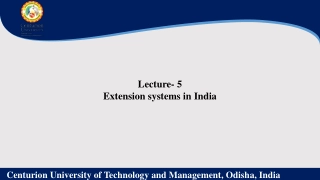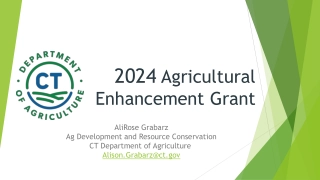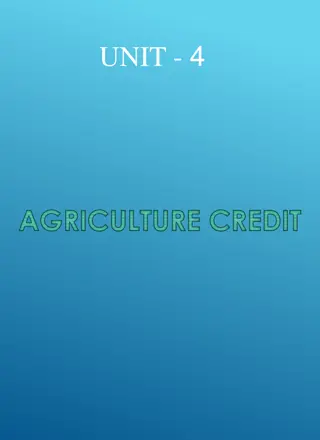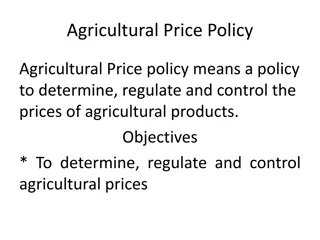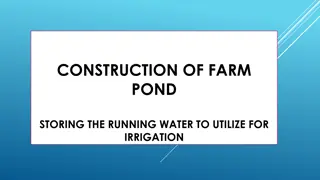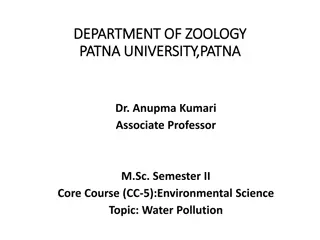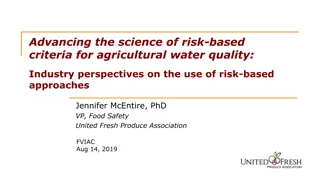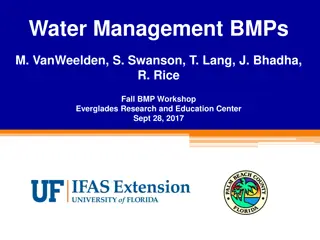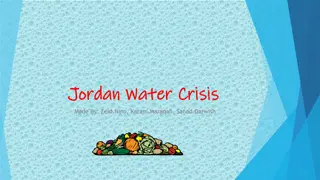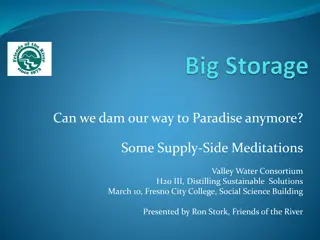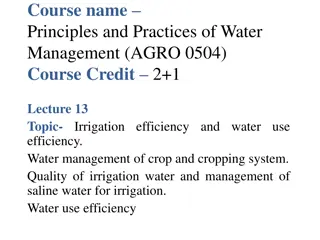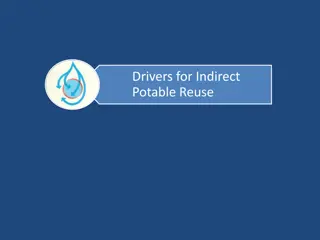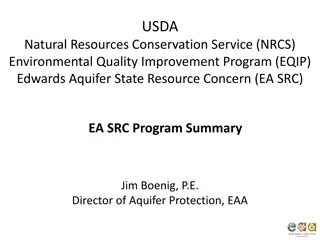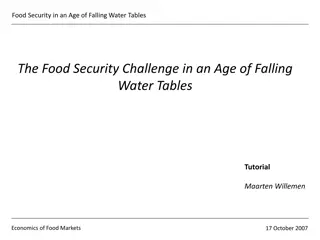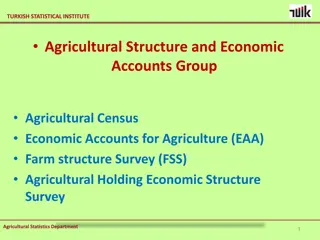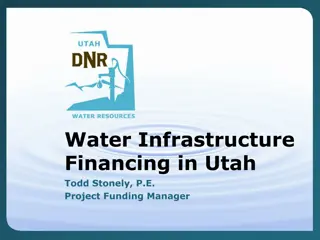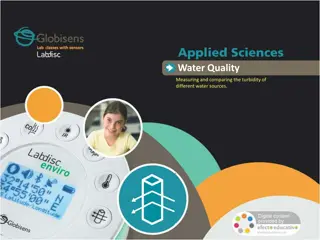CUAB 2327 Agri Technology Management
Agricultural technology, also known as agrotechnology or agtech, is revolutionizing farming practices through the application of modern scientific and technological innovations. Discover the challenges in the agricultural sector and the importance of agricultural technology in enhancing productivity
4 views • 15 slides
Lecture- 5. Extension systems in India
Explore the evolution and impact of agricultural extension systems in India, including initiatives like the National Agricultural Technology Project (NATP), Agriculture Technology Management Agency (ATMA), and the National Mission on Agriculture Extension and Technology (NMAET). These programs aim t
0 views • 10 slides
Agricultural Enhancement Grant Program Overview
The Agricultural Enhancement Grant Program provides funding for projects that support agricultural viability in Connecticut. Eligible applicants include municipalities, regional councils of governments, and agricultural non-profit organizations. Projects addressing specific focus areas can receive g
3 views • 38 slides
Alkaline Water Ionizer Machine In India | Best Alkaline water Machine
\n \nAre you fed up with consuming bland tap water that fails to deliver the health benefits you crave? Ionia presents a solution to revolutionize your water-drinking experience with our alkaline water ionizer machine. Our cutting-edge device converts regular tap water into premium-quality, antioxid
4 views • 5 slides
Water Ionizer India | Best Water Ionizer Machine
Water Ionizer India\n\nAre you worried about the purity of your drinking water? Look no further than Ionia, the premier provider of water ionizers in India. Our state-of-the-art technology converts ordinary tap water into pristine, alkaline, and antioxidant-rich water, ensuring optimal health and vi
2 views • 5 slides
Agricultural Roads Improvement Program Overview
The Agricultural Roads Improvement Program (ARIP) is a one-time grant initiative funded with $150 million to improve deteriorating Class B and weight-restricted roads hindering agricultural operations. Eligible projects must provide access to agricultural lands, involve agricultural producers, and a
5 views • 7 slides
Challenges and Trends in Agricultural Valuations and Regulations
Exploring the complexities of agricultural valuations and regulations in European countries, this content delves into the diversity of agriculture across different regions. It discusses the challenges faced in understanding farmland markets, the impact of new factors like climate change, and the imp
8 views • 14 slides
Understanding Principles and Practices of Water Management in Agriculture
This course delves into the field water cycle, water movement in soil and plants, soil-plant-water relationships, water dynamics in the soil-plant-atmosphere system, soil composition, soil texture classification, permeability factors, density of soil solids, total porosity assessment, and energy asp
8 views • 62 slides
Understanding Water Management: Principles, Practices, and Soil-Water Relations
Explore the principles and practices of water management in agriculture with a focus on water availability, nutrient relationships, and losses. Discover the physical classification of water, available water defined between field capacity and wilting point, soil water potential, and the soil-plant-at
6 views • 17 slides
Water Filtration & Bottles Stay Refreshed Anywhere, Water Filtration & Bottles
Stay Refreshed Anywhere, Water Filtration & Bottles\nSurvival Supplies Australia understands the importance of staying hydrated outdoors. When you're on the move, having a clean and fresh supply of drinking water is essential. Our range, including water filter bottles and portable water filters, ens
3 views • 1 slides
State Water Resources Control Board's Urban Water Use Efficiency Objectives
The State Water Resources Control Board proposed Urban Water Use Efficiency Objectives in March 2023 to address the challenges of a hotter, drier future. The objectives include creating storage space for up to 4 million acre-feet of water, recycling and reusing at least 800,000 acre-feet of water pe
0 views • 32 slides
Understanding Agricultural Risk Management in the Face of Natural Disasters
Exploring the impact of natural disasters on agricultural economics, this content delves into the challenges faced by farmers and the approaches available for managing risks. From analyzing the Billion-Dollar Disasters in the US to discussing private and public risk management provisions, the conten
3 views • 20 slides
Understanding Agricultural Credit: Definition, Need, and Classification
Agricultural credit involves obtaining money for farming activities with a promise to repay in the future. It plays a crucial role in facilitating agricultural production by providing financial resources from external sources. The definition, need, and classification of agricultural credit are explo
0 views • 11 slides
Understanding Agricultural Price Policy and Its Importance
Agricultural price policy plays a crucial role in determining, regulating, and controlling prices of agricultural products. Its objectives include preventing violent price fluctuations, ensuring fair prices for farmers, and integrating prices across regions. The policy aims to provide remunerative p
2 views • 33 slides
Strategies for Enhancing Agricultural Markets in India
Dr. S.P. Yadav proposes various measures to enhance agricultural marketing in India, including establishing regulated markets, developing marketing societies, improving infrastructure facilities, and ensuring timely access to credit and market information for farmers. Additional steps involve formul
0 views • 5 slides
Constructing Farm Ponds for Water Harvesting and Irrigation in Rural Areas
Proper water harvesting is essential for agricultural sustainability in rural areas. Farm ponds serve as reservoirs to store runoff and running water from natural sources, aiding in irrigation and fish production. The construction of a farm pond in Gram Panchayat Dulmot has significantly benefitted
0 views • 5 slides
The Global Water Crisis and Transboundary Issues in Southern Africa
The global water crisis is a pressing issue affecting millions worldwide, with about 700 million people currently living below the water-stress threshold. By 2025, this number is projected to reach 3 billion. The increasing pressure on shared water resources in countries like Botswana, Namibia, and
0 views • 52 slides
Planning of Surface Irrigation Systems in Agricultural Structures: A Comprehensive Guide
Planning and implementing surface irrigation systems, such as basin irrigation and furrow irrigation, play a crucial role in optimizing water distribution for agricultural purposes. This article delves into the detailed planning considerations for basin irrigation systems, including sizing of basins
1 views • 10 slides
Understanding Water Pollution and Its Impact on the Environment
Water pollution is a significant environmental issue caused by the contamination of water bodies with toxic substances like chemicals and microorganisms. This degradation in water quality poses risks to both humans and ecosystems. The pollutants stem from various sources such as agricultural runoff,
0 views • 59 slides
Advancing Agricultural Water Quality Standards: Industry Perspectives
Industry perspectives on risk-based criteria for agricultural water quality are shared by Jennifer McEntire, PhD, VP of Food Safety at United Fresh Produce Association. The discussion covers the importance of water quality in food safety, shifts in industry mindset towards risk management, regulator
0 views • 12 slides
Groundwater Contaminant Identification Through Water Sampling Techniques
This informative content discusses water sampling techniques used to identify contaminants in groundwater, focusing on factors such as FSMA regulations, total nitrogen levels, and best practices for sampling. It also addresses the importance of monitoring agricultural water quality to prevent microb
0 views • 28 slides
Best Practices for Water Management in Agricultural Settings
Exploring various Best Management Practices (BMPs) for water management in agriculture, this content delves into definitions of detention and retention, EAA farm P load calculations, rainfall detention BMP goals, water detention methods, and mixed crop rotation strategies. The information covers red
1 views • 21 slides
Water Storage Tanks Hydraulic Modeling and Water Quality Considerations
This presentation by Justine Carroll, P.E., Project Manager, focuses on the hydraulic modeling and water quality considerations related to water storage tanks. It covers topics such as water age evaluation, steady state modeling, extended period simulations, pump controls, demand patterns, EPS verif
0 views • 34 slides
IIASA's Water Program: History, Strategy, and Progress
IIASA's Water Program focuses on addressing water insecurity, uncertain futures, food security, degraded water environments, and the impacts of floods and droughts. Their mission involves conducting interdisciplinary research to identify sustainable water solutions for improving human well-being thr
0 views • 10 slides
Addressing the Water Crisis in Jordan: Causes, Consequences, and Solutions
The water crisis in Jordan is a dire situation characterized by low rainfall, droughts, and pollution leading to scarcity of clean water. This crisis has caused health issues, reduced agricultural productivity, and environmental harm. To mitigate these challenges, actions such as building efficient
0 views • 10 slides
Challenges and Solutions in California's Water Management
Addressing the complexities of water management in California, the article discusses statewide water usage, the Central Valley Project and State Water Project, existing water storage infrastructure, and new water storage projects developed since 1990. It highlights the balance between agricultural a
2 views • 28 slides
Improving Water Quality and Supply Efficiency for Yorkshire Water Customers
Yorkshire Water aims to enhance water quality and reduce interruptions in supply for its customers. By investing in maintenance and modernization of water mains, they seek to address issues related to the look, taste, and smell of tap water, as well as minimize unplanned interruptions to the water s
0 views • 30 slides
Understanding Water Potential in Plant Physiology
Water potential is a crucial concept in plant physiology, driving the movement of water within plants. It is a measure of potential energy in water and influences processes like photosynthesis. This potential is influenced by factors such as solute concentration, pressure, gravity, and matrix effect
0 views • 25 slides
Agricultural Water Safety Regulations Overview
The final Produce Rule and Preventive Controls Rule, effective since November 13, 2015, set criteria for microbial contamination in agricultural water. Generic E. coli levels are key indicators, affecting water uses in post-harvest and production. Criteria like Geometric Mean and Statistical Thresho
0 views • 43 slides
Principles and Practices of Water Management in Agricultural Cropping Systems
This course delves into the principles and practices of water management in agricultural cropping systems, focusing on topics such as irrigation efficiency, water use efficiency, crop and cropping system water management, and quality of irrigation water. It explores how assured irrigation water faci
0 views • 16 slides
Impacts and Solutions for Water Management in the Delta Region
The images depict various impacts of single-tunnel projects on the Delta region, including personal, community, agricultural, and environmental effects. The analysis discusses negative impacts on agricultural resources and calls for the advancement of water reliability through regional self-reliance
0 views • 9 slides
Supporting Access to Agricultural Insurance Through Regulation and Supervision
Enhancing wider access to index-based agricultural insurance is crucial in Africa due to the significant risks faced in the agricultural sector. This presentation by Dr. Grace Muradzikwa, Commissioner of Insurance, Pension, and Provident Funds, highlights the role of regulation and supervision in ad
0 views • 18 slides
Strategies for Sustainable Water Management
Drivers for indirect potable reuse include water stress, population growth, industrial development, droughts, and climate change. Other drivers for water reuse encompass conservation, environmental enhancement, pollution abatement, and regulatory policies. Rising water rates and costs of imported wa
0 views • 21 slides
Improving Agricultural Productivity and Environmental Sustainability in Texas
The USDA NRCS EQIP Edwards Aquifer State Resource Concern (EA SRC) program in Texas aims to enhance local agriculture productivity and environmental objectives by focusing on water quality, erosion reduction, efficient water usage, and addressing climate change impacts. The program provides voluntar
0 views • 11 slides
Fascinating Facts About Water and Its Importance
Water is an essential resource, with only a small percentage being fresh and usable. The water cycle, water usage statistics, and the significance of water for people, plants, and animals are highlighted. The content covers details on global water distribution, water scarcity in Australia, and daily
1 views • 9 slides
Food Security Challenges in an Era of Declining Water Tables
Detailed analysis highlights the link between food security and falling water tables, emphasizing the water-intensive nature of food production. As the global demand for food increases, the strain on water resources also rises, impacting agricultural output. The competition in water markets presents
0 views • 7 slides
Fascinating Facts About Water and Its Properties
Explore interesting facts about water, including its crucial role for life on Earth, the distribution of water on our planet, and the properties of the water molecule. Learn about the importance of water for human health, the chemical reactions that form water, and the different states of water. Dis
0 views • 26 slides
Agricultural Census by Turkish Statistical Institute
The Turkish Statistical Institute conducts agricultural censuses to collect data on agriculture's structure, land use, irrigation, livestock, and other agricultural aspects. Through surveys and studies, the institute aims to provide essential agricultural data, facilitate comparisons, and update fra
1 views • 14 slides
Water Infrastructure Financing in Utah: Overview of Revolving Loan Funds
Utah's water infrastructure financing system is managed through revolving loan funds established by the Board of Water Resources. These funds date back to 1947 and have been consistently funded from various sources to support projects related to water supply, flood control, and dam safety. The progr
0 views • 12 slides
Water Quality - Measuring Turbidity of Different Water Sources
The activity involves comparing the turbidity of various natural and artificial water sources using a Labidsc turbidity sensor. Monitoring water quality is crucial for identifying pollutants, trends, and usage patterns in water resources. Factors like human activities affecting water quality through
0 views • 18 slides

